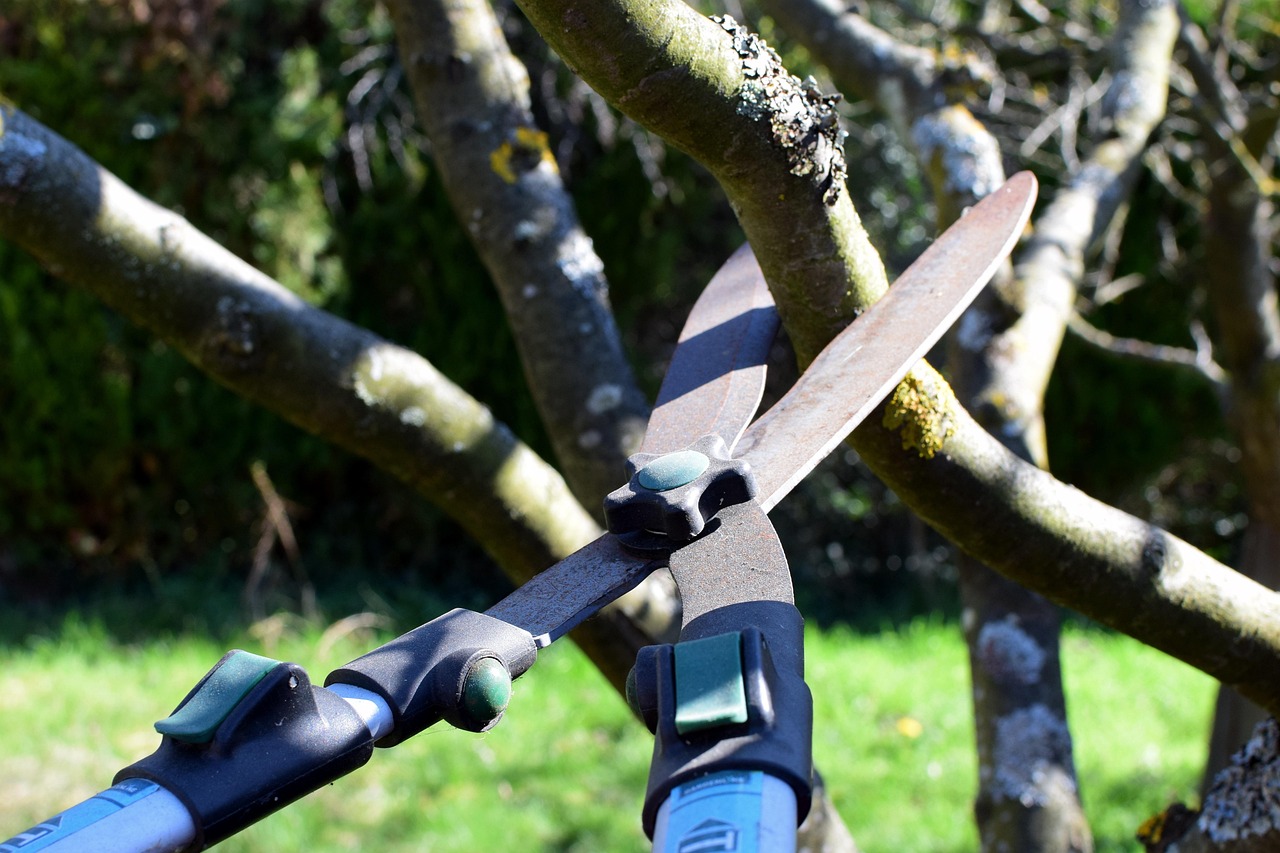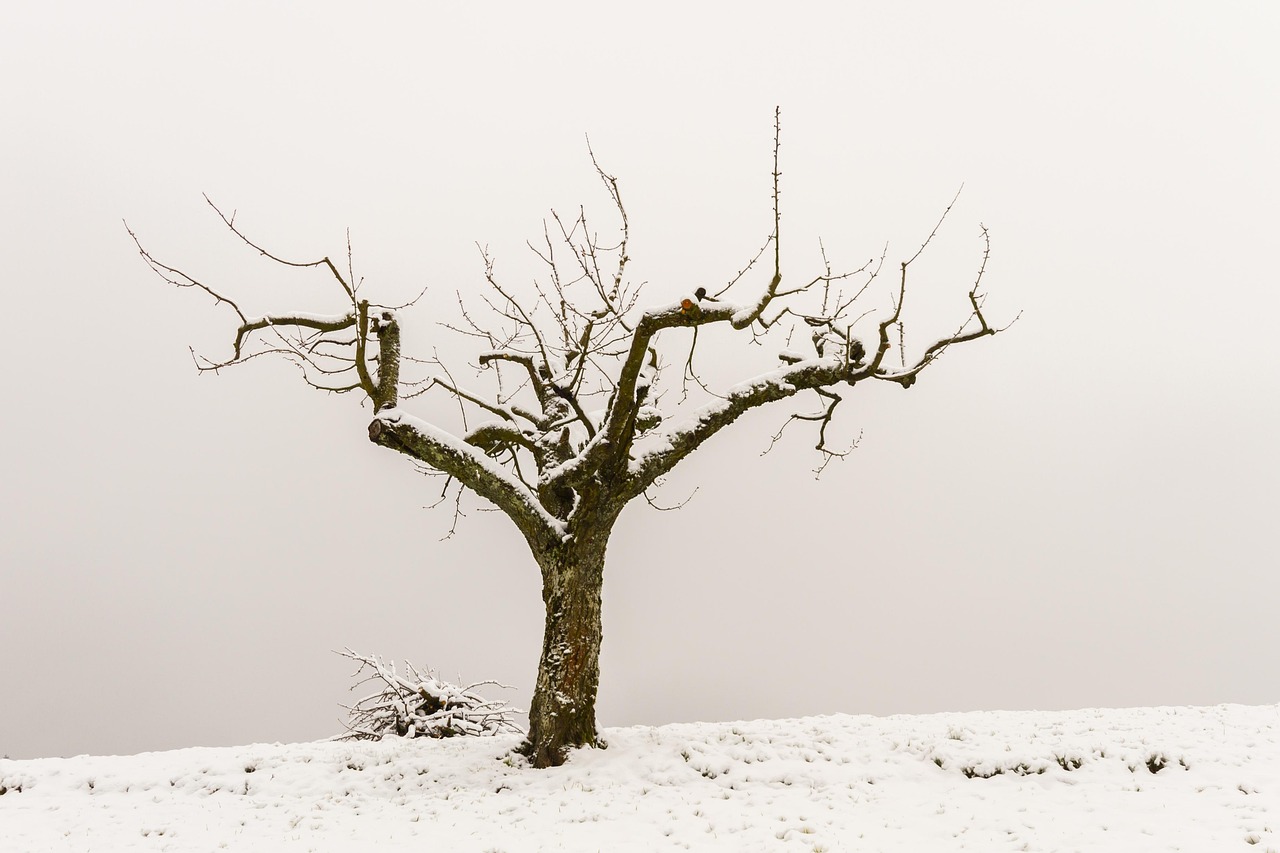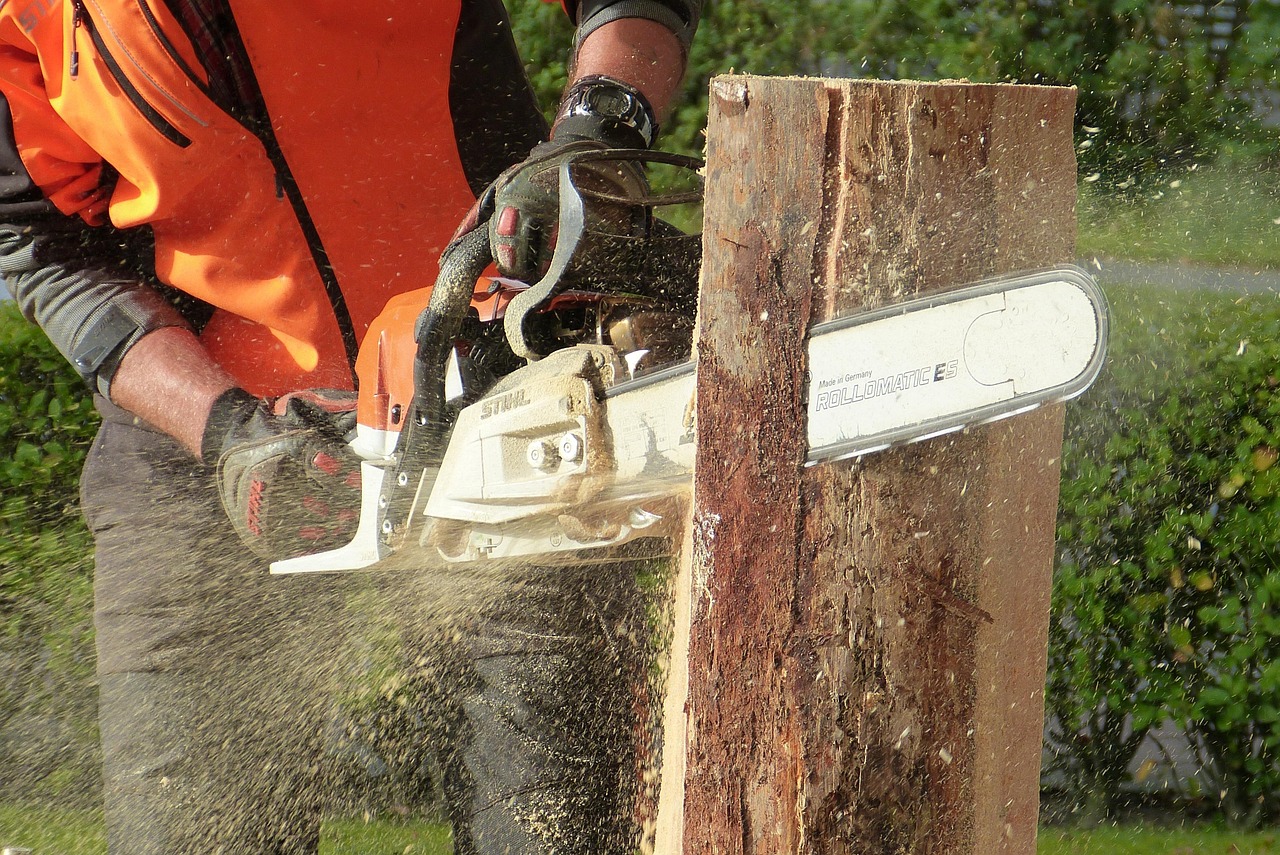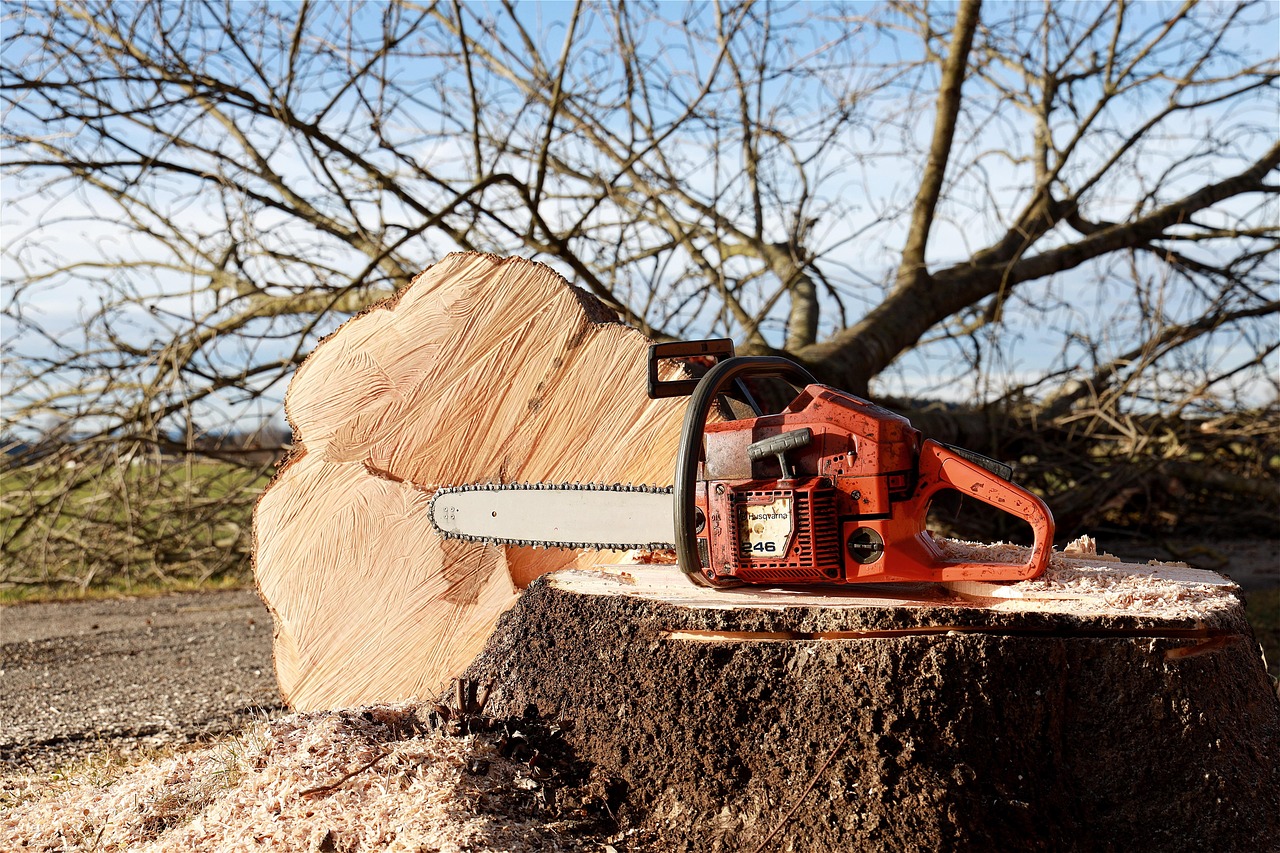Tree pruning enhances the health of trees while promoting a habitat for pollinators. By carefully trimming branches and managing tree shapes, gardeners can create environments that support bees, butterflies, and other beneficial insects.
Pruning trees is an essential practice in maintaining the vitality of gardens and landscapes. It involves removing specific parts of a tree, such as branches, buds, or roots, to improve its structure and health. However, pruning also has a significant impact on the ecosystem, particularly regarding pollinators. Healthy trees provide food and shelter for these important creatures, making proper pruning techniques crucial for fostering a pollinator-friendly environment.

Pollinators play a vital role in the ecosystem. They help in the reproduction of many flowering plants by transferring pollen from one bloom to another. This process not only supports plant diversity but also contributes to food production. Many of the fruits, vegetables, and nuts we consume depend on pollinators. Therefore, creating an environment that attracts and supports these insects is essential for sustainable gardening practices.
The Importance of Tree Pruning
Tree pruning is not just about aesthetics; it serves several important functions that benefit both the trees and the surrounding ecosystem. Here are some key reasons why pruning is essential:
- Health Maintenance: Pruning removes dead or diseased branches, preventing the spread of pathogens and improving the overall health of the tree.
- Structural Improvement: Proper pruning encourages strong branch structures, reducing the risk of breakage during storms or high winds.
- Increased Airflow: Thinning out dense canopies allows sunlight to penetrate, promoting healthy growth and reducing disease incidence.
- Enhanced Fruit Production: For fruit-bearing trees, strategic pruning leads to improved yield and quality of fruit.
In addition to these benefits, thoughtful pruning can directly enhance habitats for pollinators. By maintaining trees in a way that encourages flowering, gardeners can provide food sources for bees and butterflies throughout the growing season.

Understanding Pollinator Needs
To create a thriving ecosystem for pollinators, it’s essential to understand their needs. Pollinators are attracted to specific plants based on their flowering patterns and nectar production. Here are some key factors to consider:
- Diversity of Plants: A variety of flowering plants ensures that there are food sources available for different types of pollinators throughout the seasons.
- Nectar and Pollen Availability: Pollinators need access to both nectar for energy and pollen for protein. Trees that produce flowers rich in these nutrients are particularly beneficial.
- Habitat Structure: Providing shelter through well-pruned trees and shrubs can protect pollinators from predators and harsh weather conditions.
Some trees are particularly beneficial for pollinators due to their flowering patterns and the abundance of nectar they produce. Below is a table highlighting common trees that support pollinators along with their blooming seasons:
| Tree Species | Blooming Season | Attracts |
|---|---|---|
| Red Maple | Early Spring | Bees, Butterflies |
| Dogwood | Spring | Bees, Moths |
| Crape Myrtle | Summer | Butterflies, Bees |
| Black Cherry | Spring | Bees, Hummingbirds |
| Sweetgum | Summer | Bees |
By incorporating these trees into your garden and practicing proper pruning techniques, you can create a dynamic environment that supports a variety of pollinators. Understanding their needs and providing adequate resources will help ensure a thriving ecosystem.

The timing and method of pruning are crucial to maximize benefits for both trees and pollinators. Pruning at the wrong time can harm flowering cycles and disrupt the food supply for pollinators. Therefore, it is essential to be informed about the best practices for tree care within a pollinator-friendly framework.
This exploration of tree pruning not only highlights its benefits but also emphasizes the importance of fostering an environment conducive to pollinator health. With careful planning and execution, gardeners can enhance their landscapes while supporting essential ecological processes.
Best Practices for Pruning Trees
Effective tree pruning requires knowledge and skill. Implementing the right techniques can significantly enhance the health of trees while supporting pollinators. Here are some best practices to consider when pruning:

- Timing: The best time to prune many trees is during their dormant season, typically in late winter or early spring. This timing minimizes stress on the tree and helps promote healthy growth.
- Tools: Utilize sharp, clean tools such as pruning shears, loppers, and saws. Proper equipment ensures clean cuts that heal faster.
- Cutting Techniques: Use proper cutting techniques to minimize damage. Make cuts at a slight angle and just above a bud or branch collar to encourage new growth.
- Tree Species Consideration: Different tree species may have unique pruning needs. Familiarize yourself with specific requirements for each type of tree in your garden.
Understanding Pruning Methods
There are several pruning methods that can be employed depending on the desired outcome. Understanding these methods will help you make informed decisions about how to manage your trees effectively.
- Thinning: This method involves removing specific branches to improve air circulation and light penetration. Thinning encourages healthier growth and reduces the risk of disease.
- Reduction: Reduction pruning is used to decrease the height or spread of a tree. This method should be done gradually to avoid shock to the tree.
- Elevation: Elevation pruning removes lower branches to allow more light and accessibility beneath the tree. This method can also create space for other plants or activities in the garden.
- Pinching: Pinching is a technique often used on young trees or shrubs to encourage bushier growth. This involves removing the tips of young shoots.
The Role of Pollinators in Tree Health
Pollinators are not just beneficial for flowering plants; they also play a critical role in the overall health of trees. Healthy trees that support pollinator populations tend to be more resilient and productive. Here’s how pollinators contribute:
- Cross-Pollination: Pollinators facilitate cross-pollination, which enhances genetic diversity in trees. This diversity leads to stronger tree populations that can better withstand diseases and pests.
- Fruit and Seed Production: Many trees rely on pollinators for fruit and seed production. A robust pollinator presence directly correlates with increased yields of fruits, nuts, and seeds.
- Ecosystem Stability: Healthy populations of pollinators contribute to stable ecosystems, which benefit all plant and animal life, including trees.
Creating a Pollinator-Friendly Pruning Plan
To maximize the benefits of tree pruning for pollinators, it is essential to develop a thoughtful pruning plan. Below are steps to create an effective plan:
- Assess Your Garden: Take stock of the trees and plants in your garden. Identify which species provide food for pollinators and when they bloom.
- Prioritize Native Plants: Incorporate native tree species into your garden. Native plants are often more attractive to local pollinators and provide better habitats.
- Scheduling Pruning Activities: Schedule pruning activities based on the blooming cycles of your trees. Avoid pruning during the flowering season to prevent disrupting pollinator access to nectar.
- Monitor Tree Health: Regularly check the health of your trees. Look for signs of disease or pest infestations that may require targeted pruning interventions.
Common Mistakes in Tree Pruning
Even experienced gardeners can make mistakes when it comes to pruning their trees. Being aware of common errors can help you avoid them:
- Over-Pruning: Removing too much foliage can stress trees and hinder their growth. Always aim for moderation in your pruning efforts.
- Poor Timing: Pruning at the wrong time can lead to reduced flowering or fruiting. Always research the best timing for each specific tree species.
- Ignoring Tree Health: Failing to assess the overall health of a tree before pruning can lead to further complications. Always check for signs of disease or damage.
The Benefits of Professional Pruning Services
If you are unsure about how to prune your trees effectively, consider hiring a professional arborist. Professional services can offer several advantages:
- Expertise: Arborists understand the specific needs of various tree species and can provide tailored advice and services.
- Safety: Pruning large trees can be dangerous without proper training and equipment. Professionals are trained to handle such tasks safely.
- Aesthetic Improvement: Professionals can enhance the beauty of your landscape through expert pruning techniques while ensuring tree health.
By following these practices and guidelines, you will be well on your way to creating a thriving, pollinator-friendly garden through effective tree pruning techniques.
Seasonal Considerations for Tree Pruning
Understanding seasonal changes is crucial for effective tree pruning. Different trees have specific times when they should be pruned to promote healthy growth and flowering. Recognizing these seasonal patterns can help you make informed decisions about your pruning schedule.
Winter Pruning
Winter is generally considered the best time for pruning many deciduous trees. During this dormant season, trees conserve energy, making them less susceptible to stress from pruning. Here are some key benefits of winter pruning:
- Visibility: Without leaves, the structure of the tree is more visible, allowing for clearer assessment of branches and overall shape.
- Reduced Disease Risk: Many tree diseases are more active in warmer months. Pruning in winter minimizes exposure to pathogens.
- Encouraged Growth: Pruning in winter can stimulate new growth in the spring, leading to healthier foliage and flowers.
Spring Pruning
Spring pruning can be beneficial for various tree species, especially those that flower later in the season. It is important to consider the following:
- Timing: Prune early-blooming trees after they finish flowering to avoid cutting off new buds.
- Growth Assessment: Spring is a good time to assess how well trees survived winter conditions and to remove any damaged branches.
Summer Pruning
Summer pruning is often used to manage growth and encourage fruit production. This technique can be particularly effective for fruit trees. Key points to remember include:
- Shaping Trees: Summer pruning helps maintain the desired shape and size of the tree while promoting better airflow and light penetration.
- Removal of Suckers: This is an excellent time to remove any suckers or water sprouts that may have developed, ensuring that the tree focuses energy on productive growth.
Fall Pruning
Fall pruning is typically not recommended because it can stimulate new growth that may not survive winter cold. However, there are some exceptions:
- Late Bloomers: If you have trees that bloom late in the season, a light pruning in the fall after the leaves have dropped may be beneficial.
- Pest Management: Removing dead or diseased wood in the fall can help minimize pest problems going into winter.
Specific Techniques for Pollinator-Friendly Pruning
While general pruning techniques are important, some strategies specifically benefit pollinators. These methods ensure that blooming trees remain healthy and productive.
Crown Thinning
Crown thinning involves selectively removing branches to allow sunlight and air to penetrate the canopy. This technique can enhance flower and fruit production, which ultimately supports pollinators. Key benefits include:
- Improved Light Access: Increased light exposure promotes more vigorous flowering, which attracts pollinators.
- Disease Prevention: Better airflow reduces humidity within the canopy, minimizing the risk of fungal diseases.
Crown Raising
Crown raising involves removing lower branches to create space beneath the tree. This technique can encourage planting of flowering understory plants that attract pollinators while still benefiting the tree itself:
- Access to Flowers: By raising the crown, gardeners can cultivate additional plants that provide food sources for pollinators beneath the tree.
- Shelter for Pollinators: The space created can serve as a refuge for ground-nesting pollinators.
Encouraging Natural Habitats
In addition to proper pruning techniques, creating a natural habitat around your trees can foster a healthy ecosystem for pollinators. Consider these strategies:
- Nesting Sites: Leave some dead wood or brush piles in your garden as they provide nesting sites for solitary bees and other pollinators.
- Diverse Planting: Incorporate a variety of flowering plants and shrubs around your trees. This diversity provides multiple sources of nectar and pollen throughout the growing season.
- Limit Pesticide Use: Reducing or eliminating pesticide use helps protect beneficial insects, including pollinators.
The Impact of Climate Change on Pollinator Health
Climate change significantly affects both tree health and pollinator populations. Understanding these impacts allows gardeners to adapt their practices accordingly.
Changing Bloom Times
As temperatures rise, many trees bloom earlier in the spring. This shift can create mismatches between blooming periods and pollinator activity:
- Pollen Availability: If trees bloom before pollinators emerge, it can lead to a lack of food sources during critical times.
- Diversity Loss: Changes in bloom times may favor certain species over others, reducing biodiversity in plant populations.
Pest and Disease Pressure
Warmer temperatures often result in increased pest populations and disease prevalence. Gardeners must be vigilant in monitoring tree health:
- Pest Resistance: Healthy trees are better able to resist pests and diseases. Regular pruning helps maintain tree vigor.
- Ecosystem Balance: Promoting biodiversity among plants can help create a more resilient ecosystem that withstands pest pressures more effectively.
Taking these factors into account while planning your pruning schedule and overall garden management will support both tree health and pollinator populations in an ever-changing environment.
Enhancing Pollinator Habitats Through Community Engagement
Creating a pollinator-friendly garden extends beyond individual efforts. Community involvement can significantly amplify the impact of tree pruning and overall garden management practices. Here are some ways communities can work together to promote pollinator health:
- Community Workshops: Organizing workshops on tree care, pruning techniques, and pollinator education can empower local gardeners and landscape enthusiasts.
- Pollinator Gardens: Establishing community pollinator gardens using native plants can serve as a shared resource for pollinators, enhancing biodiversity in the area.
- Local Initiatives: Join or form local initiatives focused on habitat restoration. Working together to create green spaces can lead to healthier ecosystems.
Education and Awareness
Raising awareness about the importance of both trees and pollinators is crucial. Educational programs can inform the public about effective tree pruning and its role in supporting pollinator populations:
- School Programs: Incorporating gardening and ecology-related curricula in schools can teach children the importance of trees and pollinators from a young age.
- Online Resources: Utilizing social media and websites to share tips, videos, and resources can reach a broader audience.
- Garden Tours: Organizing guided tours of local gardens that showcase pollinator-friendly practices can provide inspiration and practical examples for others.
Policy Advocacy
Advocating for policies that protect pollinators and enhance green spaces can lead to significant positive changes in local environments. Citizens can engage with local governments to:
- Support Native Plant Legislation: Encourage the planting of native species in public parks and spaces to benefit local ecosystems.
- Promote Sustainable Practices: Advocate for sustainable landscaping practices that minimize pesticide use and support biodiversity.
- Engage in Urban Planning: Participate in urban planning discussions to ensure that new developments include green spaces that support pollinators.
Final Thoughts
Tree pruning is an invaluable practice that not only enhances the health of trees but also plays a crucial role in supporting pollinator populations. By employing proper pruning techniques, timing your efforts appropriately, and considering the needs of pollinators, gardeners can create a thriving ecosystem that benefits both plants and wildlife.
As we continue to face challenges such as climate change and habitat loss, it is essential to be proactive in our gardening practices. Engaging with local communities, educating ourselves and others, and advocating for environmental policies can all contribute to healthier ecosystems. The interconnectedness of tree health and pollinator wellbeing underscores the importance of cultivating a harmonious relationship with nature.
In summary, by incorporating effective tree pruning methods into our gardening routines, we can foster environments where both trees and pollinators flourish. This not only enhances our gardens but also contributes to the broader ecological balance essential for sustaining life on Earth.
The journey toward creating pollinator-friendly gardens is ongoing. With dedication, knowledge, and community collaboration, we can make significant strides in preserving these vital species while enriching our landscapes for future generations.
